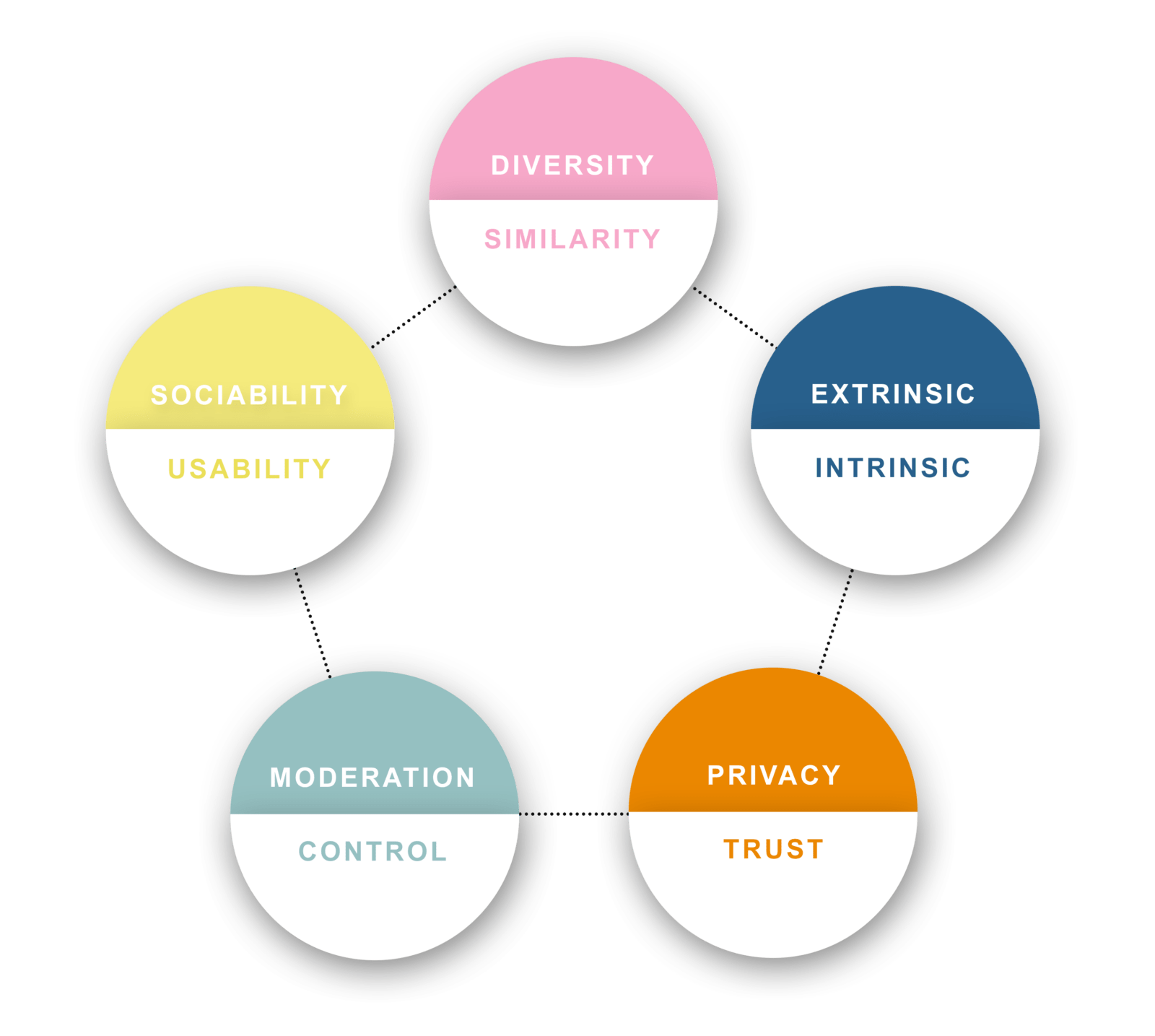Five building blocks for creating successful online patient communities
Patients increasingly use online services to gain insights into their health conditions. They do so not only by consulting Dr. Google, but also by connecting to peers to share experiences and learn from each other. These interactions take place in Online Patient Communities, platforms that facilitate the gathering of individuals who interact on a common health interest.
Online patient communities are booming and new initiatives pop up every day, leading to a very heterogeneous and scattered playing field. Despite this heterogeneity, community management faces a common struggle, namely balancing community components in a way that the community attracts, retains and satisfies patients.
To map this struggle, I identified 5 building blocks that shape the success of online patient communities. Each of these building blocks contains a trade-off that patient communities need to make in order to find a balance that satisfies patients and foster their participation.
1. Diversity vs similarity
The participants in a patient community need to be sufficiently diversified so that they can learn from each other, but on the other hand similarity is necessary to encourage interaction and develop social glue between them.
2. Extrinsic vs intrinsic motivation
Participants are extrinsically motivated since participation in the community is a very cost-effective way of gaining access to information and support, 24/7 and around the globe. On the other hand, patients experience intrinsic motivation since they enjoy participating and helping others, which makes them feel good.
3. Privacy vs trust
Reluctance to provide personal information due to privacy concerns is one of the main barriers for participation in online patient communities. However, for the health of the community it is necessary that patients share personal health information with peers in order to obtain trust and interaction.
4. Moderation vs control
The presence of a moderator plays a vital role in the success of an online patient community since he/she ensures postings stay on-topic and interactions remain civil. On the other hand, moderation should not be overdone in a way that it is experienced as a controlling factor. Patients still need to feel free to express their opinions, ideas and feelings.
5. Sociability vs usability
A patient community should offer several tools to connect patients and encourage their interaction. However, despite a wide range of tools, the community should remain an easy-to-use and reliable platform. These building blocks determine the success of online patient communities, or in other words their ability to attract individuals and foster an ongoing interaction among them around a common health interest.

Curious for more? Stay tuned, because in the following weeks more blog posts will follow in which each building block for success will be explained in more detail and will be applied to our Patient Consulting Boards (also known as online patient research communities).




